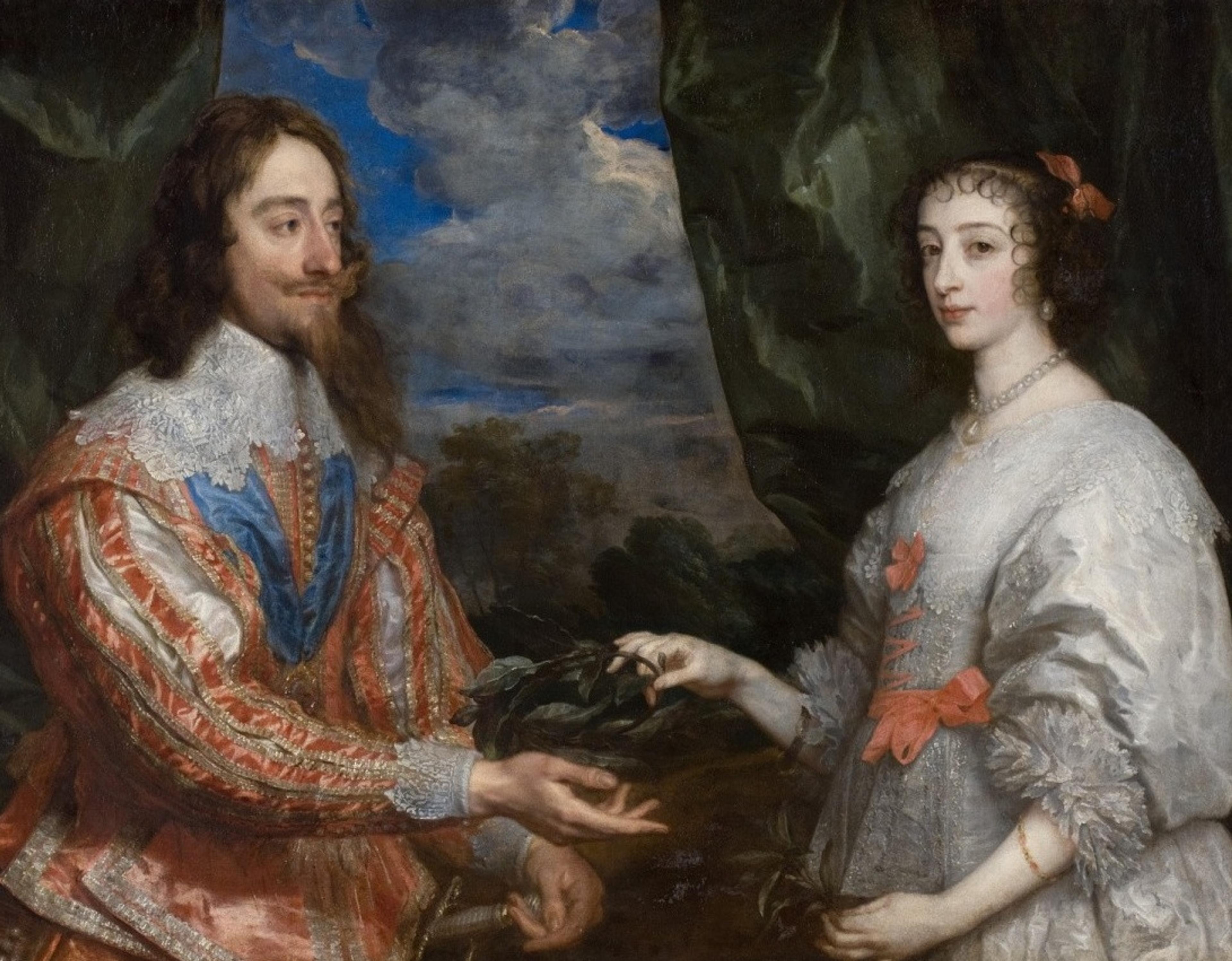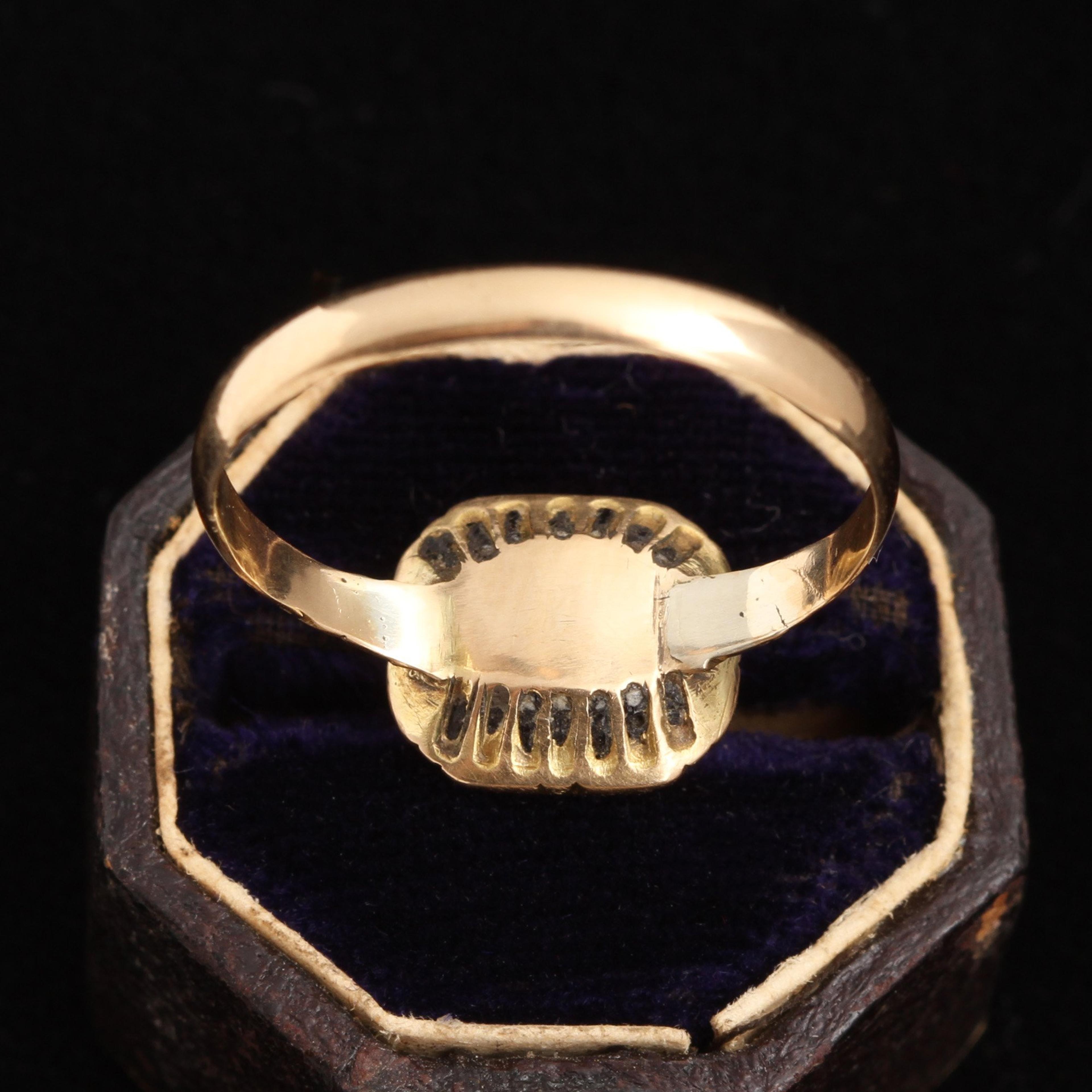Stuart crystals are faceted rock quartz crystal jewels which originated as a form of mourning (or protest) jewelry after the execution of King Charles I of the House of Stuart in 1649. The first Stuart crystals were pendants or rings and featured the initials of the king or a miniature portrait of him under a rock crystal top. Later variations included cufflinks, buttons, earrings, and slides in addition to the original pendants and rings. Some of these later versions, like this lovely ring, feature initials within a lacy frame of gold thread over a ground of fine hair work and foil. The underside of the head features the fluted detailing frequently seen in Stuart era jewelry and has retained most of its original enamel.
thedetails
- Materials
22k gold (tests), enamel, crystal, pink foil, hair, gold wire cipher
- Age
c. 1680
- Condition
Very good - some enamel loss to the fluting in the underside of the head
- Size
size 8.75, resizing not recommended; 9.7mm x 10.6mm head, 2.7mm shank
Need more photos?
Send us an email to request photos of this piece on a model.

Aboutthe
StuartEra
1603 — 1714
A new era dawned when Queen Elizabeth — the last Tudor monarch — died without an heir. The monarchy was temporarily displaced by the Commonwealth of England from 1649 to 1660 by Oliver Cromwell, but was restored — aka "The Restoration" — as Charles II was invited to take the throne. His father, Charles I, had been beheaded in 1649, and most of the jewelry we see from this period was at least stylistically related to this controversial political event. During this time, discoveries and innovations transformed England and Scotland, which were conjoined after a long period of feuding. Coffee became a new trendy beverage, with 600 coffeehouses in London all catering to a different type of clientele. This imported novelty beverage was possible because of the UK's rapidly expanding worldwide trade network. Not yet interested in acquiring territories, the island nation focused instead on making a fortune exporting wool and importing goods like slaves, sugar, and tea. Everyone (except the enslaved people, of course) benefited from the new merchant class that arose, and in the process the Royal Navy became the most powerful in the world. The look of London changed, too — after the Great Fire of 1666, Christopher Wren was hired to rebuild the city's damaged churches, with his greatest accomplishment being St. Paul's Cathedral.


